Today’s European potato harvests would be 20% lower and 7% more expensive for consumers without the last 15 years of plant breeding advances.
The environmental benefits of potato breeding
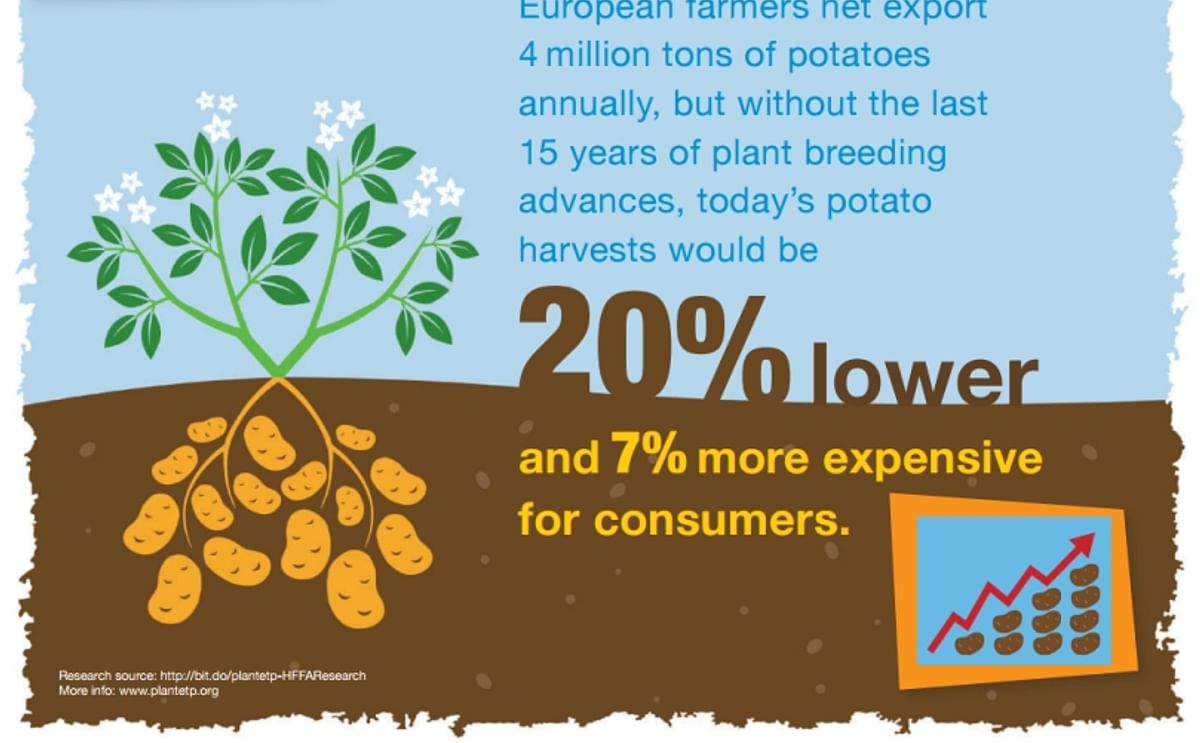
On World Environment Day (June 5), potato breeding company HZPC highlighted the benefits of breeding on yield, carbon footprint and water use.
Effects of potato breeding on potato yield
An extra 10 million tons of potatoes every year are grown by EU farmers thanks to potato breeding over the past 15 years. That’s more than the annual potato output of the whole of Poland, and means the EU can export potatoes instead of importing them.
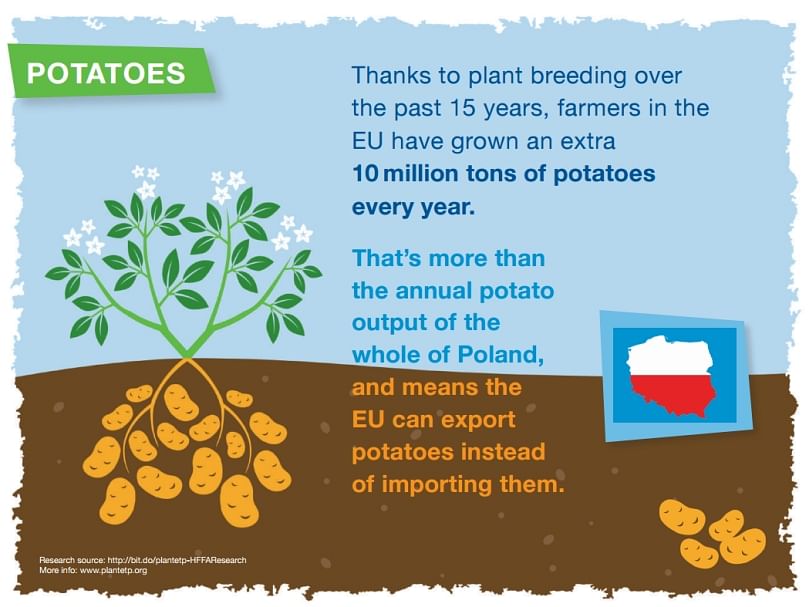
An extra 10 million tons of potatoes every year are grown by EU farmers thanks to potato breeding over the past 15 years.
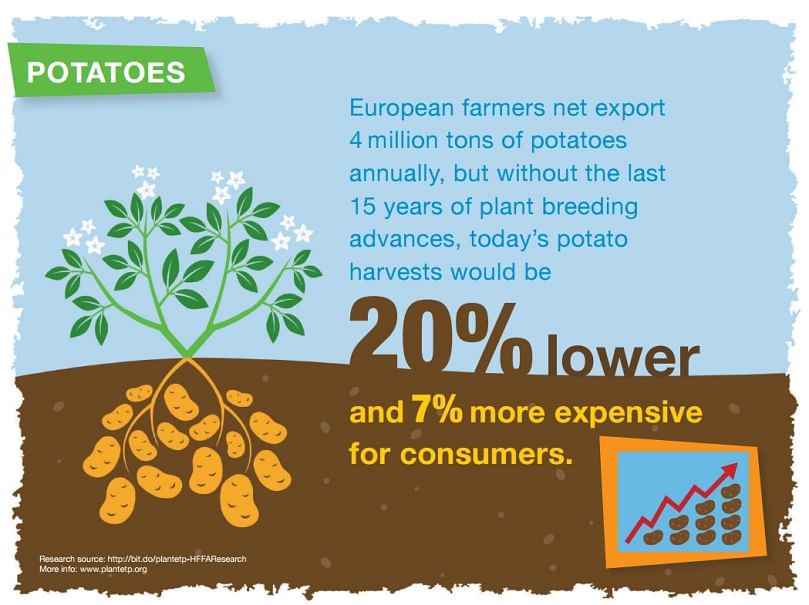
Today’s European potato harvests would be 20% lower and 7% more expensive for consumers without the last 15 years of plant breeding advances.
Effects of plant breeding on carbon footprint
Without plant breeding, Europe would need an extra 19 million hectares of farm land to produce the same amount of food (all food - not just potatoes). Turning 19 million hectares of forests, wetlands and other habitats into farmland would release 3.4 bn tons of carbon dioxide.
Annualised, that’s the same as all the greenhouse gas emissions from traffic in Germany, or the annual carbon dioxide emissions of a country like the Netherlands.
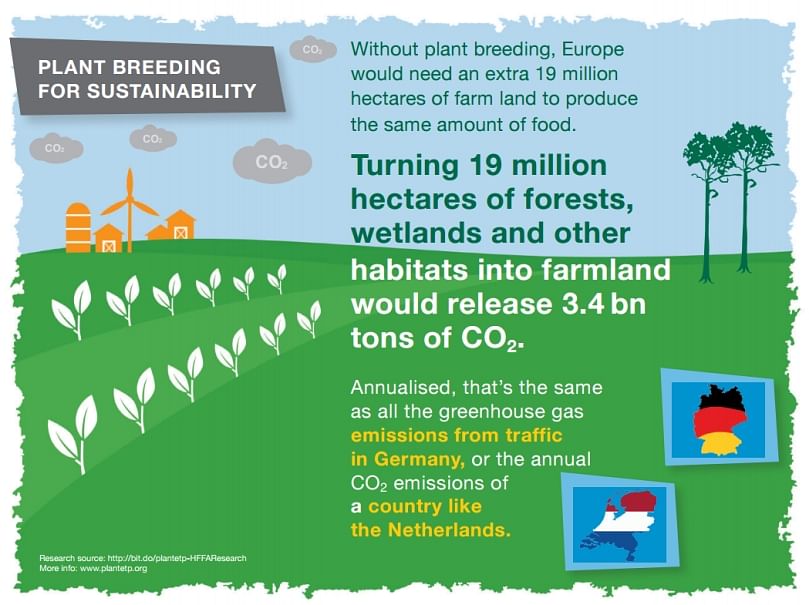
Without plant breeding, Europe would need an extra 19 million hectares of farm land to produce the same amount of food (all food - not just potatoes)
Effects of plant breeding on water use
Plant breeding has enabled EU farmers to save nearly 55bn m3 of water since 2000 (all food - not just potatoes). That is the same as 22 million Olympic swimming pools.
Plant breeding is helping EU agriculture to meet the objectives of the EU Adaptation Strategy for climate change and helping us manage droughts as our climate changes.
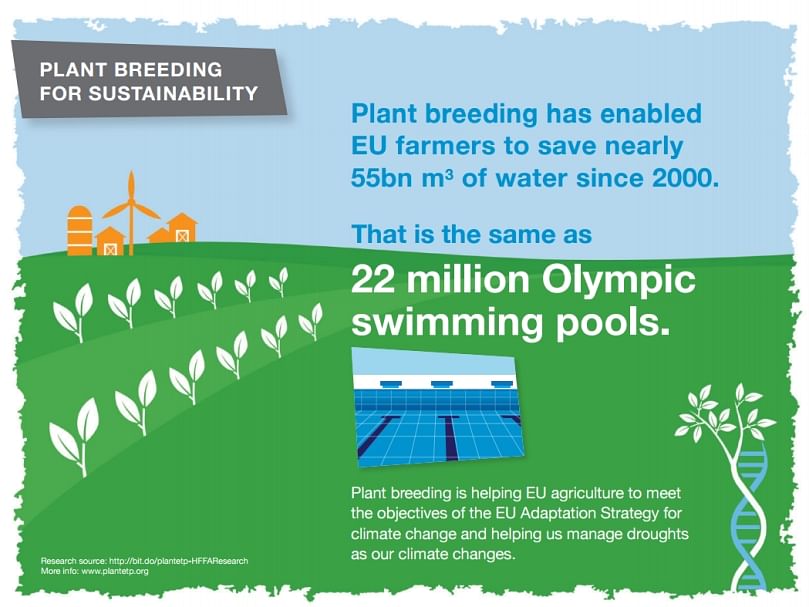
Plant breeding has enabled EU farmers to save nearly 55bn m3 of water since 2000 (all food - not just potatoes)









